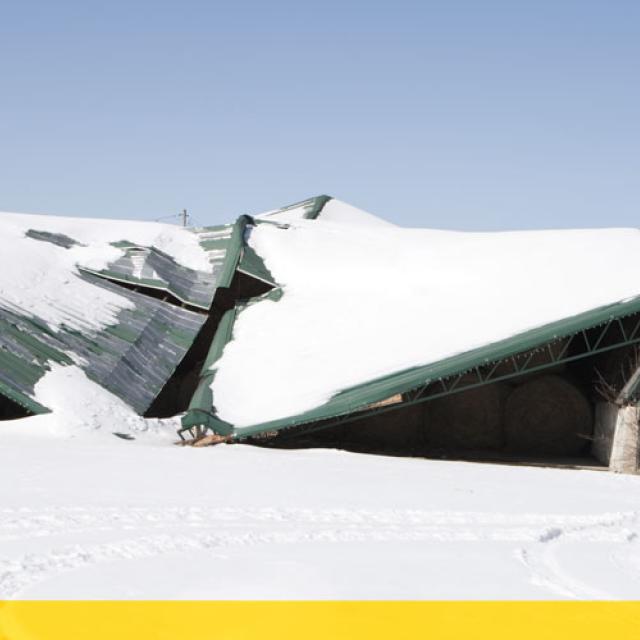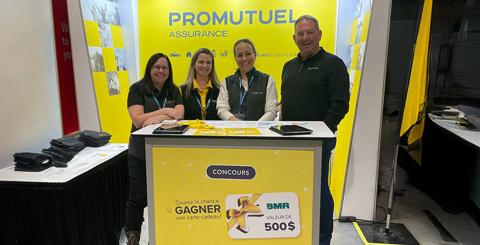Dealing with Snow on Commercial and Farm Buildings

As a business owner, you have to worry about your own roof and the one over your business. And with the cold weather and abundant snow we’ve been having in Québec over the past few weeks, that means two roofs that could require some preventive care! Here’s what you need to know about business and farm insurance for snowy situations, as well as tips on preventing damage from snow build‑up.
Commercial buildings
Did the roof over your warehouse just collapse under the weight of all that snow? Don’t panic. If you have extended or comprehensive business insurance (also known as “all perils” insurance), you’re likely covered. These types of policies insure you for a wider range of events, including damage caused by snow. It’s available for businesses, stores, apartment buildings, and other types of commercial buildings.
To avoid any unpleasant surprises, check with your damage insurance rep to make sure your insurance policy includes the necessary coverage.
Preventing damage
After a big snowfall, it’s important to visit your building as soon as possible, inspect the roof, and remove the snow to prevent it from collapsing.
Other signs to watch for
Watch for signs that your roof is bearing an excess load, especially:
- Cracks on interior walls
- Sticky doors or doors that won’t close from the inside
- Unusual cracking noises
- Warped ceiling
- Condition of drains and downspouts
If you notice any of these issues, you really need to get the snow cleared off that roof! In extreme cases, we recommend evacuating the premises and removing any equipment that may be at risk.
Farm buildings
Given the high values, large buildings, and considerable risks involved in farm insurance,, collapse coverage generally isn’t included in farm insurance policies, so it needs to be added as an endorsement.
If you want to be insured in case of a collapsed roof, you’ll need to add the coverage to your policy. Note that in most cases, there is a deductible for these types of claims.
Preventing damage
Whether your buildings house livestock, machinery, or feed, a collapsed roof could be a costly problem, causing a halt in production, a loss of human or animal life, a loss of revenue, or a fire. Here’s how to keep everything snug and safe.
Notice where snow accumulates
Even if metal roofing materials and prevailing winds can help keep your roofs clear of snow, it may still accumulate in specific spots, like drains or the junctions of an annex. Be sure to clear those sections of snow on a regular basis so the structure isn’t weakened by any excess loads.
Inspect your buildings
Here are a few signs that a building is less than sound:
- Warped or buckling roof
- Cracks in the foundation
- Significantly raised or depressed flooring
- Curved or slanted exterior or load‑bearing wall
- Curved roof, joist, or beam
If any of these descriptions apply to one of your buildings, repair and strengthen the structure as soon as possible!
Inspect your lofts
Inspecting the lofts of your buildings on a regular basis is a good way to spot these types of problems and keep them from compromising the stability of your roofs and buildings. Each time you inspect, examine each load‑bearing section carefully and watch for the following signs:
- Moldy or rotting wood
- Wet or excessively humid insulation
- Broken or splitting wood
- Corroded metal connectors
Take notes, replace anything that needs replacing, and fix the problem that caused it to wear out or break in the first place. For bigger problems, consider bringing in a licensed contractor.
As you can see, to avoid major damage, prevention remains your best insurance! By following these tips and checking your business insurance coverage in the event of a collapse and other snow related risks, you will have more peace of mind. Please feel free to share this article, which will certainly be useful to those around you!




